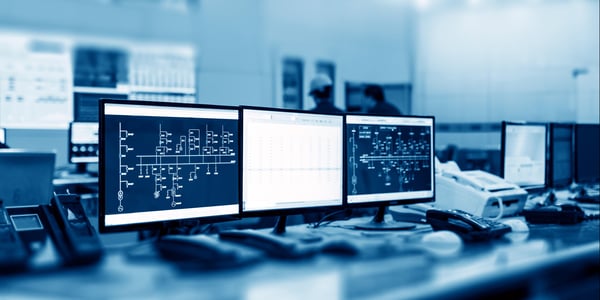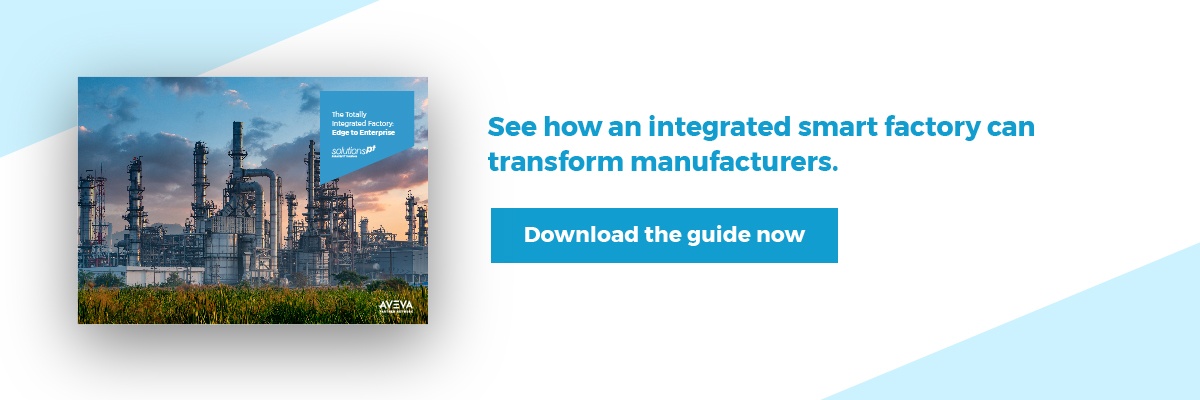Too much data, too many screens and outdated systems are just some of the shared challenges control room operators are facing. An unhappy control room is an unproductive one and that can have a seriously negative knock-on effect across your factory.

Here’s a quick look putting together a control room and what to consider when it’s time to implement new software, design the room itself or implement security measures.
Control Room Software
Introducing new control room software to your organisation can be a slow and complicated process. For the implementation to be successful, you need to ensure it’s in keeping with the existing culture.
Without buy-in from those all-important stakeholders, no software will solve the problems you’re hoping to fix.
However, with the right support from all involved, software can solve many of the most common control room challenges.
For example, the right software can manage far higher volumes of data than any human can. It can take data from a variety of sources, quickly run that data through algorithms and then present the most meaningful information to control room operators.
Similarly, software can consolidate multiple systems into a single intuitive, context-driven operations centre. This removes much of the unnecessary control room clutter that causes daily frustration. Plus, a centre like this allows for automation between different software applications, everything from SCADA to maintenance systems.
Software can deal with the challenge of wanting to empower field operators. Without the right information and visibility, these operators are working with one hand tied behind their back. With the right software in use, it’s easy for them to access critical information whenever they need it, even if they’re on the move.
Control Room Design
Manufacturers sometimes adopt standards like ISA 101 because they address the design, implementation, and maintenance of HMIs. This gives them the most efficient control of the process in both normal and adverse situations.
Similarly, standards like EEMUA 191, which cover alarms, are followed. When implemented correctly, this minimises operator stress by only displaying alarms that need their attention. By focusing only on the most relevant information, operators can work efficiently and productively.
One of the most crucial aspects of control room design is ergonomics. How comfortable is the control room to work and operate in? This is such a simple worker need that’s sometimes overlooked.
When control room solutions are haphazardly thrown together, no one’s ever really considering the layout, screens or furniture that’s used. It’s important to follow the same assessments as you would in an office.
Are the chairs comfortable? Does the lighting prevent glares? Is it easy to use mice and keyboards without having to sit unnaturally?
Keeping these questions in mind ensures the control room is a productive and ergonomic place to be. The more comfortable control room operators are, the easier it is for them to do their job.
Especially if the software has also been designed in a way so operators can understand exactly what’s happening immediately so they can respond in a timely manner.
What Makes a Good Control Room?
Using a top-down approach, a control room should be designed with the needs of the operator and operational requirements in mind.
This means that the design of a modern control room solution should take in account room layout, monitor tilt, lighting, and air temperature to ensure that the working environment supports the long-term high performance of its operators.
A three-step approach is recommended for a good control room solution:
- Facility siting is a process by which the location of the control room within a plant is determined, based on its optimal access to various areas of the plant and proximity to adjacent buildings.
- Operational design is the process of designing a building with operators in mind. This type of design looks at the building from the point of view of the person who will be using it, not from the perspective of how architecture might affect them.
- Interior Selections are based on ISO 101 standards for interior finishes, furniture, lighting, and acoustics.
Control Room Security
You don’t need us to tell you how serious a security breach can be and the negative impact it can have on the control room. Take the now-infamous WannaCry hack on the NHS in 2017. Thousands of appointments and operations had to be cancelled as thieves demanded payment in Bitcoin.
Similarly, attacks on power companies in recent years have brought down the grid and left thousands without access to electricity.
Attacks of this kind leave operators unable to access vital machines and are most common when control rooms rely on outdated systems. These are most susceptible to attack and leave manufacturers exposed to hackers from all over the world.
Security isn’t something an operator should really be worrying about, but previous security techniques have left their systems open to attack. Although there’s been a good amount of security guidance in place (NIST IEC 62443) to reduce the attack surface in a plant, gaps are still present.
As with any system, security needs to be a vital consideration to avoid complicated issues in the future.
Control rooms are a key part of the monitoring of any plant but for your organisation to be as productive and efficient as possible, you need to see the bigger picture.
A Totally Integrated Factory
Is your plant working as efficiently as it could be? Without collaboration and communication across different teams and spheres, you might not be reaching your full potential.
For a closer look at how an integrated factory looks in practice, make sure to download our free resource. It examines how systems can operate from Edge to Enterprise and the steps you need to take to get there.

![[FREE GUIDE] EMBRACING NEW TECHNOLOGY TO TRANSFORM YOUR FACTORY](https://no-cache.hubspot.com/cta/default/4487147/9d21f2d1-3cef-4512-b927-eb448cf098a0.png)

